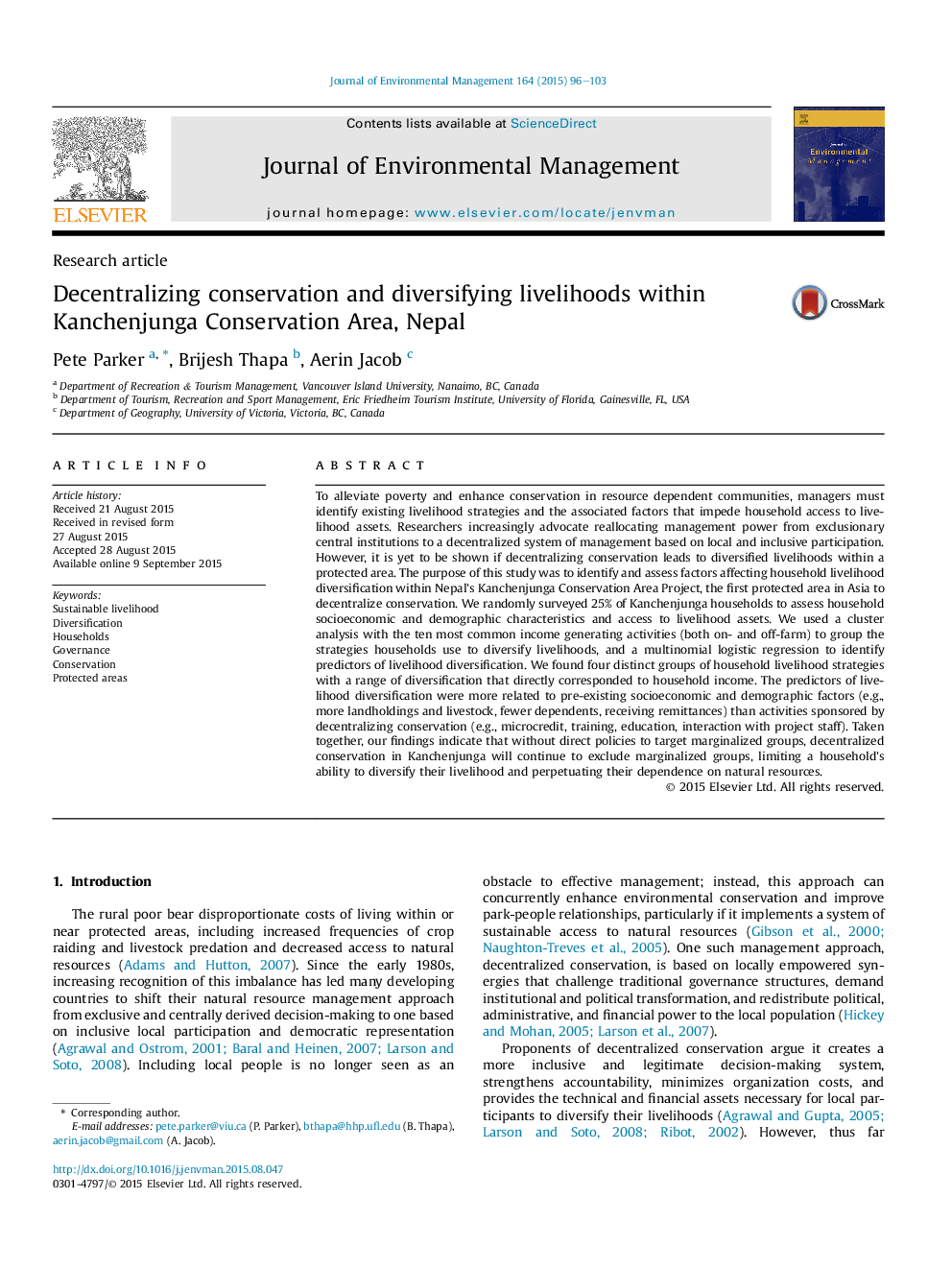| Article ID | Journal | Published Year | Pages | File Type |
|---|---|---|---|---|
| 1055412 | Journal of Environmental Management | 2015 | 8 Pages |
•Levels of livelihood diversification directly corresponded to household income.•Pre-existing factors affect diversification more than decentralization activities.•Least diversified household were least active in decentralization activities.•Poverty alleviation policies need to better identify and prevent marginalization.
To alleviate poverty and enhance conservation in resource dependent communities, managers must identify existing livelihood strategies and the associated factors that impede household access to livelihood assets. Researchers increasingly advocate reallocating management power from exclusionary central institutions to a decentralized system of management based on local and inclusive participation. However, it is yet to be shown if decentralizing conservation leads to diversified livelihoods within a protected area. The purpose of this study was to identify and assess factors affecting household livelihood diversification within Nepal's Kanchenjunga Conservation Area Project, the first protected area in Asia to decentralize conservation. We randomly surveyed 25% of Kanchenjunga households to assess household socioeconomic and demographic characteristics and access to livelihood assets. We used a cluster analysis with the ten most common income generating activities (both on- and off-farm) to group the strategies households use to diversify livelihoods, and a multinomial logistic regression to identify predictors of livelihood diversification. We found four distinct groups of household livelihood strategies with a range of diversification that directly corresponded to household income. The predictors of livelihood diversification were more related to pre-existing socioeconomic and demographic factors (e.g., more landholdings and livestock, fewer dependents, receiving remittances) than activities sponsored by decentralizing conservation (e.g., microcredit, training, education, interaction with project staff). Taken together, our findings indicate that without direct policies to target marginalized groups, decentralized conservation in Kanchenjunga will continue to exclude marginalized groups, limiting a household's ability to diversify their livelihood and perpetuating their dependence on natural resources.
